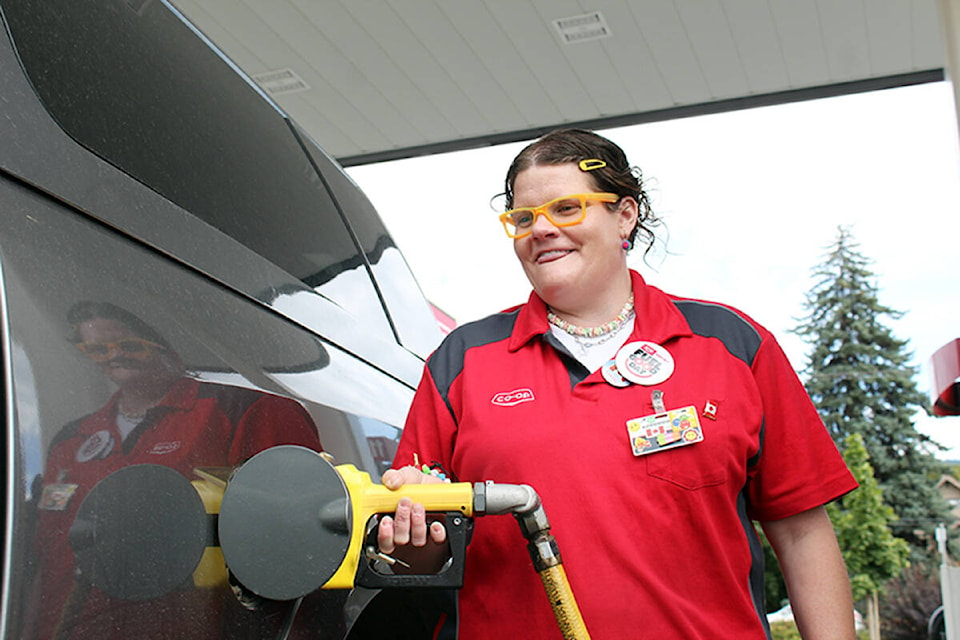Some people are experiencing some fuel price shock at the moment — though the impact on you will depend on your vehicle, the length of your commute and many other factors.
But there are some things to keep in mind on a day-to-day basis which may help you reduce the impact on your budget and the pain at the pumps.
1) Short trips are for walking and biking.
Okay, not everyone or every situation allows for walking or biking, but lots do. Not only will it save you money at the pumps, but leaving the car parked for short errands and in between stores means you give yourself some fresh air and exercise as well.
2) Accelerate slowly.
Okay, you always wanted to be a race car driver, but really, beating a stranger from one stop light to the next not only will not get you ahead in life, it also won’t get you ahead in fuel savings. The Government of Canada website suggests imagining you have a cup of coffee on the dashboard, and you try not to spill it. Slow and steady really does win the race to savings in this case.
2) Keep a steady speed.
Again, you are not in the Indy 500, so gunning the engine intermittently is not the answer to a bigger bank account. On no account is this fuel efficient, so use cruise control when the conditions allow, keep yourself steady on the speed limit and allow your speed to drop going up hill so your engine doesn’t need as much fuel.
3) Give yourself space and watch for what is coming.
Close following distances are not only good for creating a pain in the rear end, if you catch my drift, but they also require faster deceleration, which is less efficient. So give other vehicles some space, it will help you keep your speed consistent.
4) Speed limits are good for you.
Not only will not speeding save you money in speeding tickets, but fuel efficiencies are usually highest in the speed-limit friendly zone of 50 to 80 km range. Over 80 km per hour, fuel efficiency can go down quickly. According to the Government of Canada website, at 120 km per hour, a vehicle uses approximately 20 per cent more fuel. So if you are concerned about the latest increases in fuel prices of less than 10 per cent, just think, you could potentially be saving more than that if you used to drive at high speeds.
5) Coast if you can — to decelerate.
While we’re not suggesting you go back to the old manual transmission days and try to put your vehicle in neutral to go down hill, it does pay to let your foot off the gas and wait to hit the brake, which also takes you back to the giving yourself space from the traffic around you.
Read more: Lakecity seeing gas as high as $1.78.9 a litre at the pumps March 3
6) Tires matter.
Fuel efficiency can be greatly impacted by your tires. Heavier treads, under-inflated tires and other factors around your tires can change your fuel efficiency and add up. Make sure you swap your ties for the season, buy tires that do more than look good and check your pressure.
7) Avoid idling.
Funny that this one has to be mentioned, but just yesterday, walking on Oliver Street, a pickup truck was idling with no one inside. Guess that person had money to burn…
8) Lose some weight.
In your vehicle, how many times do you let stuff build up. Things like recycling, sports equipment, and other unnecessary and sometimes heavy items actually add to how much fuel your vehicle will need to burn. It takes more fuel to move a larger load. This includes bike racks and can also be why you might consider a smaller vehicle a better option for day to day use.
9) There’s power in numbers — combine trips.
If you have to drive to work, then try to pick up groceries on your way home and save yourself a trip back to the store if you can. Vehicles are usually more fuel efficient once they are warmed up, so if you do two or three errands at a time with a warm vehicle, they will be that much more efficient.
10) Carpool if you can.
It is not always possible, and while it might take some adjustment, just imagine if your weekly commute’s fuel bill was reduced to one third what it is now. That is what would happen if you and two coworkers carpooled to and from work. That is a bigger savings than the most recent increase in fuel costs.
These are just the tip of the iceberg, many more options are available to reduce your fuel consumption, and as a result, reduce your spending at the pumps.
And remember to give space to pedestrians and cyclists, less cars on the road reduces fuel prices, competition for parking, greenhouse gas emissions and costs in road repairs.
Good luck, every little bit you save by using less fuel benefits long-term sustainability, reduces the reliance on fossil fuel production in foreign countries and as Marie Forbes says, “Puts some jingle in your jeans.”
Read more: Gasoline prices at Canadian pumps hit highest national average ever
ruth.lloyd@wltribune.com
Like us on Facebook and follow us on Twitter
